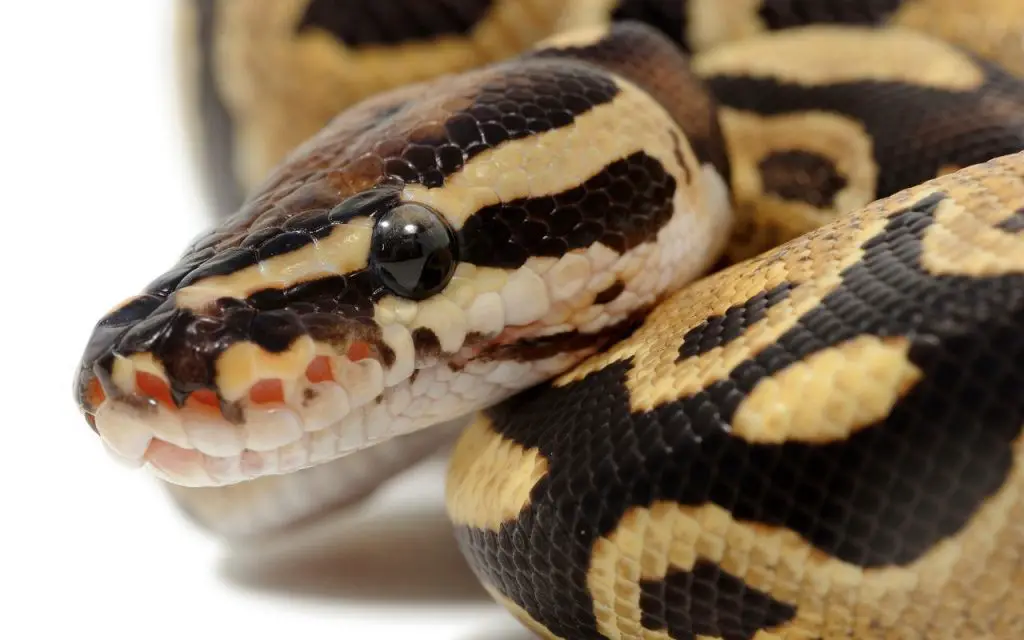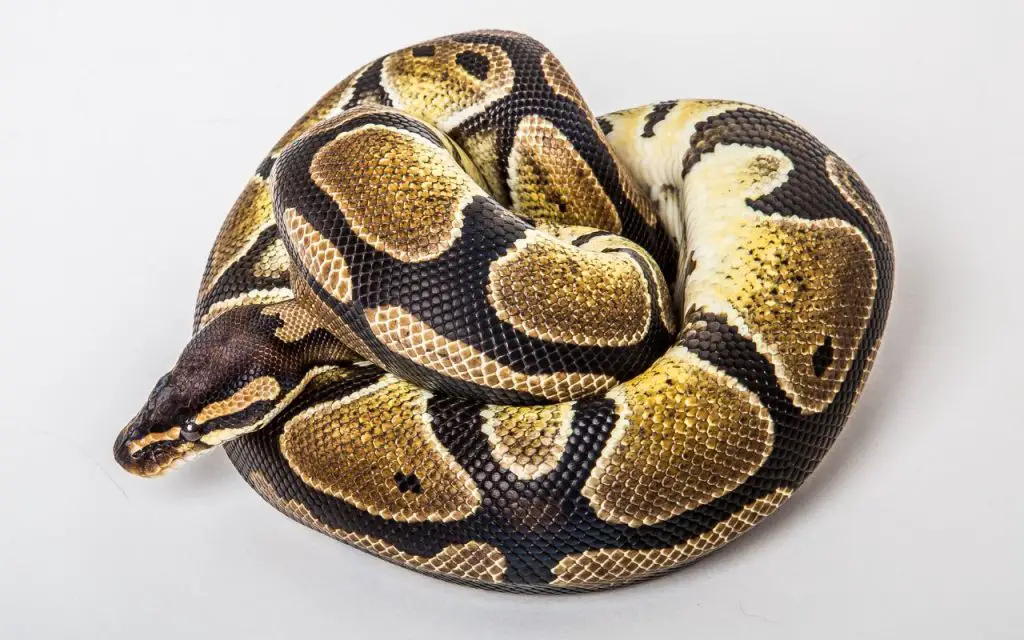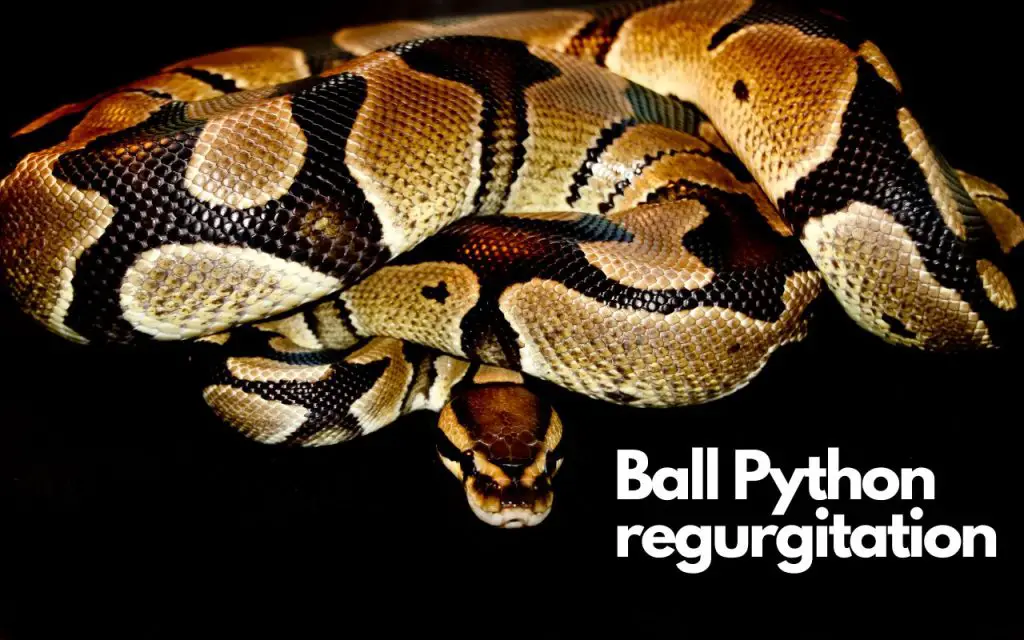If you see your Ball Python regurgitating, there are a few things you need to check. As usual, this issue is almost always husbandry related. In todays post, we’ll go through all the issues that commonly cause regurgitation, so that you can put the problem to bed.
Last updated on May 10th, 2024 at 07:31 am
When you’ve spent as much time with ball pythons as I have, you begin to pick up on their quirks, habits, and occasional health challenges. Regurgitation is one such challenge that can be alarming to witness, but understanding its root causes and differentiating it from vomiting can make all the difference in providing your snake with the best care.
What is Regurgitation?
In simple terms, regurgitation is when a snake expels undigested prey from its mouth. It’s an involuntary act, usually occurring within 48 hours after feeding.
Often, regurgitated food just looks wet and slimy. It doesn’t look digested, or broken down in any way.
Is it Normal for Snakes to Regurgitate?
In my experience, it is not normal for a Ball Python, or any other snake, to regurgitate. If the husbandry is good, it’s 100% possible to have a snake that never regurgitates for as long as you have it.
Snakes regurgitate for a variety of reasons, some more concerning than others. A singular episode may not be a sign of a grave problem, but recurrent instances should be a red flag for any keeper.
Regurgitation vs Vomiting
While often used interchangeably, regurgitation and vomiting are not the same:
- Regurgitation: Expulsion of undigested food, often occurring due to stress, improper temperatures, or other factors discussed below.
- Vomiting: This is a sign of an underlying illness or health issue. The expelled matter is often partially digested, and the act may be accompanied by noticeable discomfort.
Truth be told, I am more worried about a snake that is vomiting than one that is regurgitating. Obviously the two issues are closely related, and have similar causes, but it seems that vomiting is more often related to more serious issues like impaction.
In a nutshell, regurgitation is an urgent issue – whereas vomiting might be an emergency.
Top 6 Causes of Regurgitation
Let’s take a look at the 6 most common causes of a Ball Python regurgitating. These aren’t in any particular order, but what I would like to mention right now is that numbers 1 and 4 are by far the most often involved.
1. Low Temperatures
Ball pythons are poikilothermic, relying on external sources to regulate their body temperature, and therefore digestion. Low ambient temperatures can affect their digestion, leading to regurgitation.
Low temperatures also lead to a variety of other illnesses, so this is a great husbandry factor to start your investigation with.

2. Impaction/Ingesting Substrate
When substrate gets ingested along with prey, it can lead to blockages, prompting the snake to regurgitate. Notwithstanding, I haven’t witnessed this on many occasions with Ball Pythons. They seem to be able to swallow reasonably-sized chunks of substrate and pass them.
As far as I can tell, the most dangerous substrate for impaction is sand. Sand collects in the gut, silting it up and blocking it, rather than being passed through via peristalsis like an object or stool would be. You should not use sand as a substrate.
3. Rough Handling
Handling your snake too soon or too roughly after feeding can make it regurgitate. Obviously, we’ve all heard the advice about not handling your snake for 24 or 48 hours after feeding but sometimes you have to!
If your snake rolls into its water bowl while feeding and floods the enclosure for example, you’ll need to change the substrate after a few hours. In this scenario, gently lift the snake into another enclosure during cleaning. Gentle handling like this is quite safe, just be very careful.
4. Stress – either acute or chronic
Sudden changes in their environment, frequent disturbances, or unsuitable habitats can cause stress, leading to regurgitation. If your snake is new, bear in mind that shipping can be highly stressful, so regurgitation might happen if your feed it too soon.
When it comes to chronic stress, the most common cause is an enclosure that offers too few hiding places, and feels too open.
I have encountered this problem myself with Ball Pythons I have adopted and were previously kept in large vivariums. Two weeks in a tub or rack and they start feeding ravenously – go figure!

5. Inappropriately-sized prey/overfeeding
Offering prey too large for the snake can cause them to regurgitate. Overfeeding may be also play a role, but more so in juveniles and hatchlings than adults.
Often, younger snakes take a while to know what’s best for them, and before they reach a 1000grams in weight will simply try to eat everything you offer. Obviously, it’s on us to feed appropriately-sized prey at correct intervals.
Feed a prey item just slightly thicker than your snake’s greatest girth, once every 5 days for hatchlings, or every 7 days for juveniles.
6. Parasites
Internal parasites can disrupt digestion, leading to both regurgitation and vomiting. The main way they do this is by irritating the intestinal and stomach linings. Protozoa such as cryptosporidium may occasionally cause regurgitation or vomiting, though not always.
If you suspect parasites, veterinary care is an absolute must. You will in all likelihood need prescription medication for your pet.
Table: Quick Look at Causes and Solutions
| Cause | Solution |
| Low temperatures | Ensure consistent, appropriate temperatures with thermostats |
| Ingesting substrate | Choose safe substrates like coco chips or newspaper. Do not use sand. |
| Rough handling | Handle minimally and gently if it is necessary post-feeding |
| Stress | Create a calm, stable environment with plenty of hiding places |
| Inappropriate prey size | Choose prey relative to the snake’s size |
| Parasites | Seek veterinary guidance |
What to do if you See your Ball Python Regurgitating
First and foremost, don’t panic.
- Remove the regurgitated prey and clean the area to prevent bacterial buildup.
- Let your snake rest. Refrain from handling them for several days.
- Review the possible causes listed above and make necessary adjustments.
- Wait at least two weeks before attempting to feed again, offering smaller prey.
As I mentioned earlier, this issue is almost always husbandry-related. Work through the list above, but if altering your husbandry doesn’t help after a few weeks, you should consider consulting a vet.

What to do if you See your Ball Python vomiting
Vomiting is a serious issue, and in my opinion merits immediate attention from an exotics vet. In the meanwhile:
- Remove the vomit and clean the enclosure.
- Isolate the snake from others, if you have multiple.
- Keep an eye out for other signs of illness.
- Keep an eye out for any stools – your vet may want one for analysis
Something worth mentioning here is that vomiting can cause dehydration, so make sure a large bowl of fresh water is available at all times.
Ball Python Regurgitating: Final thoughts…
As experienced keepers will tell you, the key lies in observation and understanding. While regurgitation can be alarming, a keen understanding of its causes will equip you to make the best decisions for your ball python. Remember, the well-being of these captivating creatures rests in our hands, and it’s our duty to provide them with the best possible care.
If you have other questions or concerns about your Ball Python’s health, try reading my article on the signs of a sick Ball Python.

